What is CBDA (Cannabidiolic Acid)? CBDA vs. CBD
By CBD American Shaman | July 08, 2020
CBD is a commonly known cannabinoid found in hemp plants and is used to create a range of CBD products. It has become a popular wellness supplement used to help improve overall health. But many people aren’t aware of its relative cannabinoid, cannabidiolic acid, or CBDA. We’ll discuss CBDA: how it’s made, how it works, and more.
What are Cannabinoids?
Cannabinoids are active ingredients found in cannabis plants that interact with the body’s natural cannabinoid receptors. These receptors send cellular response signals to different parts of the body to elicit different reactions. For example, THC (tetrahydrocannabinol) is the most well-known cannabinoid found in marijuana that creates an intoxicating effect in users because of the way it interacts with cannabinoid receptors in the brain. CBD (cannabidiol) and CBG (cannabigerol) are also common cannabinoids that trigger different responses but don’t cause intoxicating effects like THC. All cannabinoids exist in their acidic form before they become active.
What is CBDA?
Cannabidiolic acid (CBDA) is a cannabinoid acid naturally produced in cannabis plants, most commonly found in raw hemp and marijuana plants. CBDA is the acidic form of CBD, meaning CBDA is the precursor to CBD. When heat is applied to CBDA in a process called decarboxylation, it converts to CBD. This can happen when the plant is exposed to heat, dried out, or processed. CBDA is considered an inactive cannabinoid due to the added carboxyl ring in the molecular chain. When the cannabidiolic acid is exposed to heat, it loses its acidic carboxyl ring and breaks down into the active compound CBD.
How is CBDA Made?
Before all cannabinoids are converted into separate acidic and non-acidic cannabinoids, they all originate from one cannabinoid called CBGA, cannabigerolic acid. When CBGA encounters an enzymatic reaction in the plant, it’s converted into various cannabinoids, either THCA, CBDA, and other cannabinoid acids. These cannabinoids will remain in acidic form until the plant is harvested and decarboxylated.
What’s the difference between CBD and CBDA?
Both CBD and CBDA are cannabinoids naturally produced in cannabis plants. However, most growing cannabis plants contain small amounts of CBD. Most commonly, CBD first exists as CBDA, and it isn’t until the plant is processed that the CBDA turns into CBD. Since CBDA is the acidic version of CBD, CBDA interacts with the body’s endocannabinoid system differently than CBD. The process of decarboxylation transforms CBDA into CBD, making it an active ingredient.
What is the Process of Decarboxylation?
Decarboxylation is the process of heating cannabis plant matter to activate the compounds that are naturally found in the plant. Cannabinoid acids are considered inactive until they are decarboxylated due to the change in molecular structure. Cannabinoid acid molecules have a carboxyl ring attached to them, and the decarboxylation process breaks down that extra ring to create an active cannabinoid.
Decarboxylation can happen through curing and heating the plant material. Drying out and curing cannabis plants will naturally convert the cannabinoids into their active form. But, this method only creates a partial decarboxylation because not all of the cannabinoid acids will convert to their active forms. Heating cannabis with temperatures of at least 220 degrees for 30 minutes is considered a forced decarboxylation method and should allow full decarboxylation without vaporizing the cannabinoids. Another method is exposing cannabis to high-temperatures, which will instantaneously decarboxylate the material, but also turn the material into a smoke or vapor. This process occurs during vaping, smoking, or inhaling heated cannabis materials.
The active versions of cannabinoids have been thought to be absorbed by the body more easily and offer more benefits. However, recent information has shown that both CBDA and CBD offer benefits to the body.
What are the Potential Benefits of CBDA?
Thus far, the benefits of CBDA are not completely understood, and it is still being researched. We do know, however, that CBDA works with the endocannabinoid system (ECS) and the 5-HT receptors. The endocannabinoid system is responsible for regulating many functions throughout the body to create a state of balance, also known as homeostasis.
Unlike other cannabinoids, CBDA doesn’t bind directly with the cannabinoid receptors found in the ECS. CBDA interacts with the ECS by blocking the cyclooxygenase-2 enzyme from breaking down natural cannabinoids in the body called endocannabinoids. This allows the endocannabinoids to interact with the receptors more efficiently and improves the endocannabinoid system.
CBDA can also have benefits on mental positivity due to the way it interacts with the 5-HT receptors, the receptor responsible for influencing serotonin levels. CBDA can help improve mental state and create a more efficient endocannabinoid system. Both of these benefits can provide overall better health and create a sense of balance in the body.
Where Can I Find CBDA?
You can find CBDA in raw hemp plants and raw hemp oil products. Juicing fresh hemp flowers and leaves can extract the natural CBDA before the plant compounds dry out and begin to decarboxylate. Some CBD companies will create raw CBD products that include CBD oil that has not been filtered or decarboxylated, therefore containing CBDA.
CBDA Takeaways
CBDA is the compound that becomes CBD when it is decarboxylated. Both compounds naturally occur in cannabis plants and interact with the body’s endocannabinoid system. CBDA can be found in raw CBD oil and fresh hemp plant material.
The content on this site is not intended to be a substitute for professional medical advice, diagnosis or treatment. While research has shown that CBD has the potential to help provide beneficial outcomes for several complaints, it is advisable to seek the advice of a physician or other qualified healthcare provider when you have questions regarding any medical condition and when starting, augmenting or discontinuing any existing health routine.
Recommended Reading
Recent Blog Posts

Quality

Safety

Mission

Charity

Innovation
 Store
Locator
Store
Locator